If you’re on a mission to eat all the pasta types on your trip to Italy, your work is cut out for you. It’s estimated there are more than 350 varieties, so Italy has no shortage of delicious pasta dishes.
Then where do you start? Consider this your pasta primer. While we won’t discuss every type of pasta, we will cover the main shapes, share 29 kinds that you might find on your trip to Italy, and give you some recipes to cook at home.
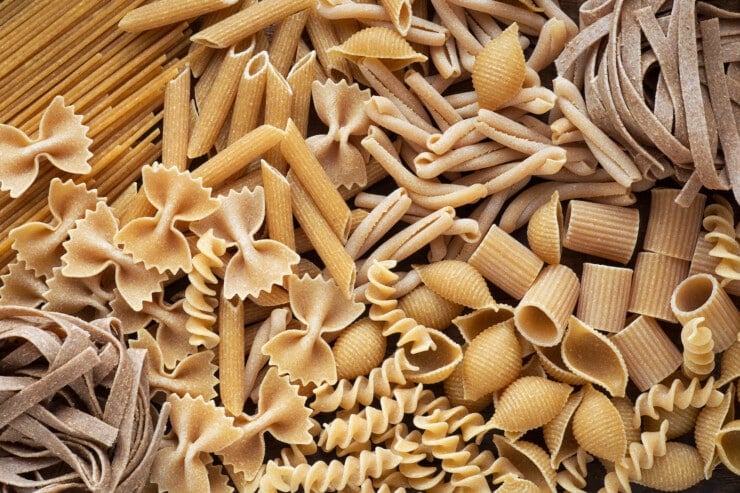
The History Of Pasta In Italy
Noodle-like foods have existed for thousands of years — estimated as early as 3,000 B.C. — in Asia, Africa, and the Middle East. Legend claims that Marco Polo brought pasta to Italy after journeying to China in the 13th Century; however, evidence from an Etruscan tomb proves that pasta may have existed in Italy as early as the 4th Century B.C. The origin of pasta in Italy remains murky, but what’s certain is that it became an Italian cuisine staple by the Renaissance.
In the 18th century, the tomato traveled from the Americas to Italy, becoming well-integrated into pasta dishes. Then, pasta factories became increasingly common in the 19th century, allowing for large-scale production and widespread food consumption — both of these made a permanent spot for pasta in Italian culture and cuisine. Over time, various regions developed distinct shapes, doughs, and pasta preparation methods, like Bologna with ribbon-like tagliatelle or Puglia with the beloved orecchiette.
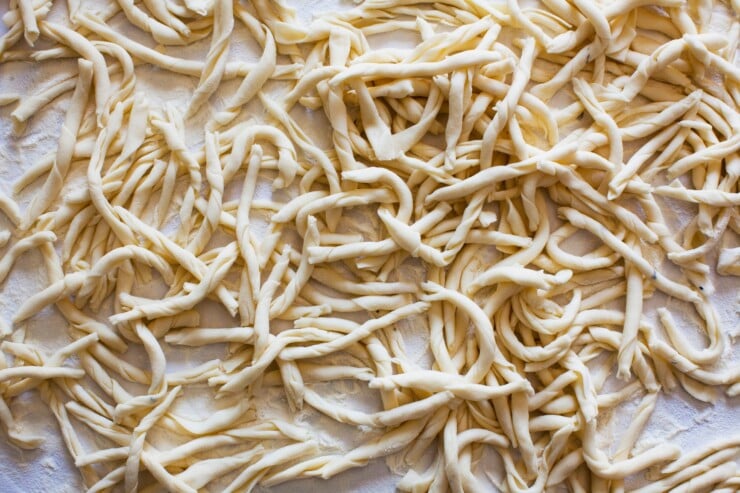
General Pasta Shapes
Although hundreds of different pasta shapes exist, a few broad shapes help to categorize the food: short (pasta corta), long (pasta lunga), tube, filled (ripiena), designed for cooking in soup broth (pastina), dumplings, or specialty shapes.
Aside from appearances, the shape and texture — such as a noodle with ridges (rigato) or a larger, flat one with lots of surface area — help to catch the sauce. Generally, you’ll see light, cream, or oil-based sauces paired with thinner noodles, like angel hail, and more robust meta sauces go well with larger noodles.
Pasta Dough Across Italy
The diversity of pasta dough ingredients across Italy reflects the country’s rich regional culinary traditions. In the North, particularly in regions like Emilia-Romagna, pasta dough typically features a blend of eggs and 00 flour, a finely milled flour that creates a smooth, pliable dough. This combination is fundamental for making classic dishes like tagliatelle, tortellini, and lasagne.
Historically, this was the wealthiest part of Italy and, thus, the main area where you’d see pricey eggs mixed into the dough. Adding eggs enriches the dough, giving pastas like tajarin a tender texture and a golden hue.
Moving to Central Italy, the pasta dough often maintains the use of eggs but might incorporate semolina flour, especially in regions like Tuscany and Umbria. This combination strikes a balance between the richness of the eggs and the slightly coarser texture of semolina, which is made from durum wheat. The result is a dough well-suited for shapes like pappardelle or stuffed pasta.
In the South, particularly in regions like Puglia and Sicily, the dough often skips eggs entirely, relying solely on semolina flour mixed with water. This yields a firmer, more resilient pasta ideal for extruded shapes like orecchiette or the classic Sicilian busiate. The absence of eggs and semolina lend the pasta a more robust texture, suitable for heartier sauces and preparations. Across these regions, the choice of ingredients is not just a matter of tradition but also a response to the local climate and agricultural practices. The variations in dough composition lead to distinct textures and flavors, showcasing the incredible diversity of Italian pasta-making.
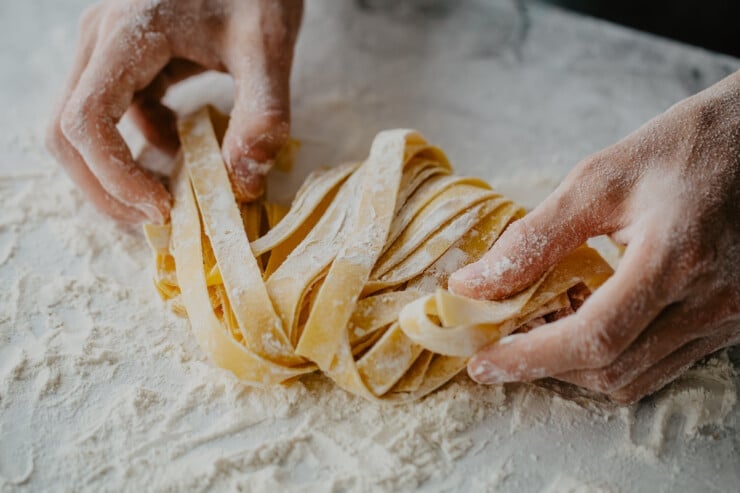
Fresh Versus Dry Pasta
Fresh and dry pasta represent two distinct facets of Italian culinary tradition, each with unique characteristics and culinary applications. Fresh pasta, typically made from a simple blend of flour, eggs, and sometimes water is celebrated for its delicate texture and slight egg flavor. Its tender, slightly absorbent surface makes it ideal for clinging to rich, creamy sauces or delicate, butter-based concoctions. Regions like Emilia-Romagna, known for their stuffed pasta like tortellini and ravioli, are renowned for their fresh pasta.
On the other hand, dry pasta is typically made from durum wheat semolina and water, without eggs. The absence of eggs and the use of durum wheat lend dry pasta a firmer texture and a longer shelf life, making it a staple in Italian pantries. It’s particularly dominant in Southern Italy, with classic shapes like spaghetti and penne. Dry pasta holds up exceptionally well to hearty, robust sauces such as tomato-based marinara or ragù alla bolognese, owing to its firmer texture.
Choosing fresh and dry pasta isn’t just a matter of taste and culinary context. Fresh pasta’s delicate nature suits refined, subtle flavors, while dry pasta’s sturdiness pairs well with bolder, more rustic sauces. This distinction beautifully illustrates the versatility and regional diversity of Italian pasta traditions.
FAQs About Pasta Types
In Italy, some of the most common types of pasta include spaghetti, linguine, fusilli, penne, tagliatelle, and bucatini. Each region in Italy has its own special pasta shapes, reflecting the diverse culinary traditions across the country.
Yes, each Italian region boasts unique pasta types. For instance, Tuscany is known for pappardelle and testaroli, Lombardy for its uniquely shaped pasta like pizzoccheri and casoncelli, and Emilia-Romagna for tagliatelle and tortellini. These regional varieties often pair with local sauces and ingredients.
Some pasta types common in Italy but rare elsewhere include orecchiette, trofie, strozzapreti, and caserecce. These shapes are often specific to certain regions and are made using traditional methods.
Italy offers a plethora of iconic pasta dishes. Some must-try dishes include Spaghetti Carbonara, Tagliatelle al Ragù (Bolognese), Penne all'Arrabbiata, Linguine al Pesto, and Fusilli al Pomodoro. Each dish showcases the rich and diverse flavors of Italian cuisine.
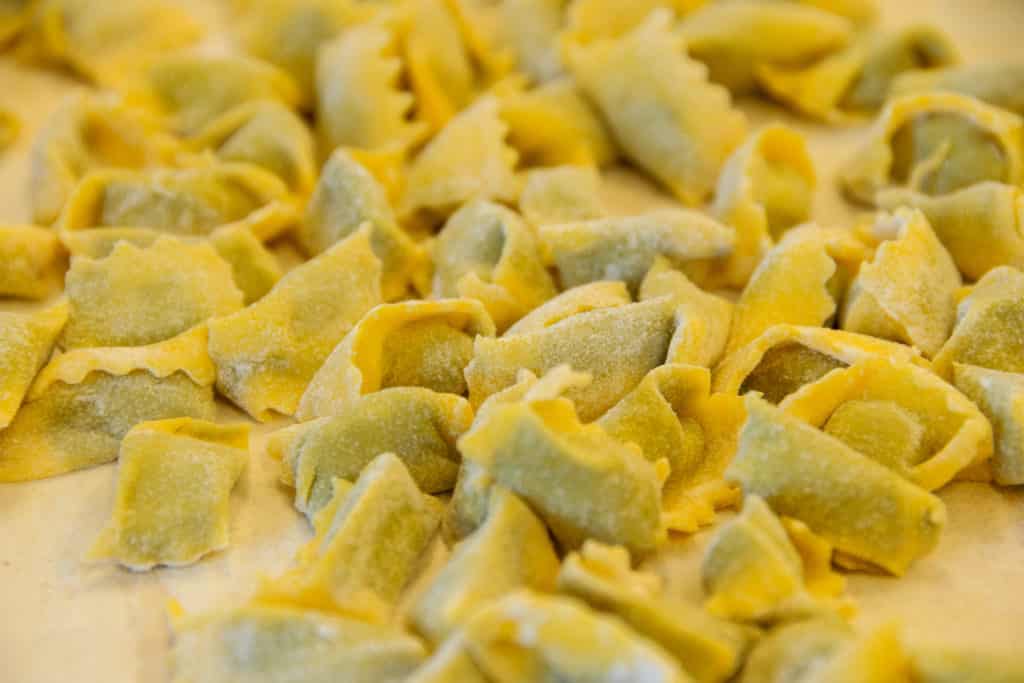
29 Types of Pasta From Italy
This guide will cover a variety of noodles, from those that are typically handmade to ones more often found in a dried form. These days, you will find most of these shapes in grocery stores in the United States, but we’re also including where they’re from and the common sauce pairing so that you’re in the know when you travel to Italy.
Types of Pasta in Northern Italy
Agnolotti or Agnolotti del Plin (Piedmont)
Agnolotti (pronounced “ann-nyo-loh-tee”) is a filled fresh pasta that made it onto our list of regional specialties of the Piedmont region. It differs from ravioli because only one sheet of pasta gets folded onto itself to cover the filling of roasted meat and veggies, rather than two. To not distract from the enticing flavors of these dumplings, agnolotti del plin often has a simple sauce of beef broth and melted butter or some butter and fresh sage.
Corzetti (Liguria)
Corzetti (pronounced “core-zeh-tee”) is a fresh pasta that has a circular shape. A unique embossing sets them apart. The pasta circles were originally pressed with a coin or medallion, which left the impression of a design. Pasta makers eventually used stamps made with the family crest and the design would tell people who made the pasta (or who it was made for) and help the sauce cling to the noodles. Corzetti hail from Liguria, the birthplace of pesto, and, fittingly, they pair exceptionally well with fresh basil pesto with pine nuts. By the way, if you’re wondering, you can read too all about “What Is Pesto Sauce?”
Farfalle (Lombardy and Emilia-Romagna)
Farfalle (pronounced “far-fall-eh”) means “butterfly” in Italian, and these adorable noodles came about in the 16th century when people wanted to use leftover dough from making a filled type of pasta. Known as strichetti (pronounced “stree-keht-eee”) in the Emilia-Romagna region, these noodles resemble a bow-tie shape; outside of Italy, many call it bow-tie pasta.
To make this shape, a flat piece of pasta has its edges trimmed to a ruffle, and then the chef pinches the center to look like bow ties. Farfalle comes in various sizes, too — the larger version is called farfalloni, while farfalline is the smaller one, and farfalle rigate has ridges. They work well with a lemon-garlic or creamy tomato sauce, often appearing in cold dishes like pasta salads.
Gnocchi (originated in the North)
Thanks to the Columbian exchange in the 15th Century, potatoes arrived in Europe and were eventually incorporated into recipes using sauces like pesto or Pomodoro.
True, gnocchi (pronounced “nyo-key”) are made from potatoes and are technically considered an Italian dumpling, but they often get lumped together with pasta dishes. While the most classic gnocchi are made with white potatoes, you’ll find variations, including this chestnut gnocchi we had in Piedmont.
Linguine (Liguria)
Meaning “little tongues” in Italian, linguine (sometimes written as linguini) looks like a flattened spaghetti noodle. Linguine (pronounced “lynne-gween-eh”) came about in the 1700s in Genoa and had the flat nature of fettuccine but a more narrow width. Like fettuccine, though, these noodles pair perfectly with simple creamy sauces. You’ll also see a version of linguine in Liguria called trenette that is used in the classic Pasta With Pesto Potatoes and Green Beans Recipe.
Penne (Liguria)
Penne (pronounced “pehn-eh”) is plural for penna, meaning “pen,” because the ends of this short pasta look like the angled nib of a pen. Penne pasta originated in 1865 from pasta maker Giovanni Battista Capurro, who patented a machine that could cut noodles (versus doing it by hand). You may find penne rigate (with ridges) or penne lisce (smooth), and the hollow noodles taste amazingly cooked al dente with vodka, pesto, marinara, or arrabbiata sauce.
Strozzapreti (Emilia-Romagna, and also Tuscany in Central Italy)
Several legends exist to explain the Italian name for strozzapreti (pronounced “stroh-zah-preht-tee”), which means “priest choker” or “priest strangler” — from the mere shape of the noodle looking like a clerical collar to priests who loved the pasta so much they ate it too quickly and would choke. The noodles are an elongated form of cavatelli (see below).
Tajarin (Piedmont)
Tajarin (pronounced “tie-yah-reen”), originating from the Piedmont region of Italy, are thin, egg-rich noodles, similar to tagliatelle but finer. Celebrated for its delicate texture, tajarin is typically made with loads of egg yolks (some chefs use up to 40 egg yolks per kilo of flour) and is served with a simple butter and sage sauce or a luxurious truffle sauce, complementing its egg-forward flavor and silky texture.
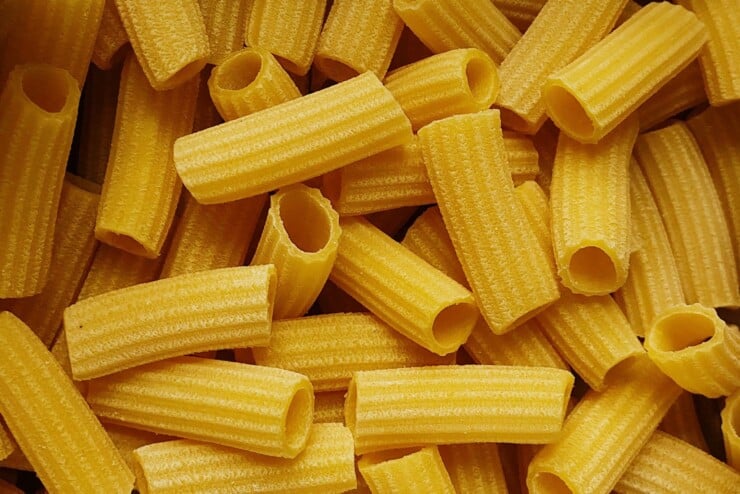
Types of Pasta in Central Italy
Bucatini (Lazio)
The name for bucatini (pronounced “boo-cah-teen-eh”) comes from buco, the Italian word for “hole.” These long noodles look thick and similar to spaghetti, except they’re hollow. You might see bucatini in an Amatriciana sauce of guanciale (pork jowl), pecorino romano cheese, and tomato.
Fettuccine (Lazio)
This flat, thick noodle has become a staple in classic Italian-American cuisine, thanks to fettuccine alfredo (which originated in Rome). More often in Italy, you’ll find fettuccine (pronounced “feht-ah-cheen-eh”) used with a ragù or meat sauce — an ideal pairing for these “little ribbons” of noodles.
Campanelle (Tuscany)
With a bell-like shape and a ruffled edge, campanelle (pronounced “camp-ah-nell-eh”) could earn the award for most beautiful pasta. Called “little bells,” the unique shape does an excellent job of catching the flavors of whatever it’s paired with, and you’ll often find this used with heartier sauces, like meat or tomato-based ones.
Lasagne (Emilia-Romagna)
Lasagna (pronounced “lah-zahn-yah”) noodles are wide, flat pasta from Italy, particularly the Emilia-Romagna region. Traditionally layered in the eponymous dish, lasagna, these noodles are commonly paired with rich sauces like bolognese (meat-based) and bechamel (creamy white sauce), often interspersed with cheese and vegetables.
Pappardelle (Tuscany)
The long and wide pappardelle (pronounced “papp-arr-dell-eh”) noodles feel exceptionally luxurious because of their extra surface area, meaning they catch plenty of sauce. Think fettuccine, except even broader noodles that take center stage with a hearty bolognese, wild boar ragù, or fragrant puttanesca sauce. The name comes from the word pappare, which means “to gobble up” in Italian.
Rigatoni (Lazio)
People believe rigatoni (pronounced “rig-ah-tony”) originated in Rome, but you’ll find these kinds of noodles everywhere, particularly in Central and Southern Italy. Rigatoni shares qualities with penne, ziti, and elbow macaroni, but the form of the pasta sets it apart. Because of their open shape, they catch sauces well, so enjoy rigatoni with a meat or mushroom sauce. These hollow, ridged noodles are best served al dente to keep their cylindrical shape.
Tagliatelle (Marche and Emilia-Romagna in the North)
A cartoonist in the 1930s told a story about a chef who created tagliatelle (pronounced “tall-yah-tell-eh”) pasta after being inspired by a noblewoman’s hairdo. While that’s not proven, the name comes from the Italian word tagliare, meaning “to cut.” These long, flat ribbons from egg pasta dough traditionally pair with a meat sauce.
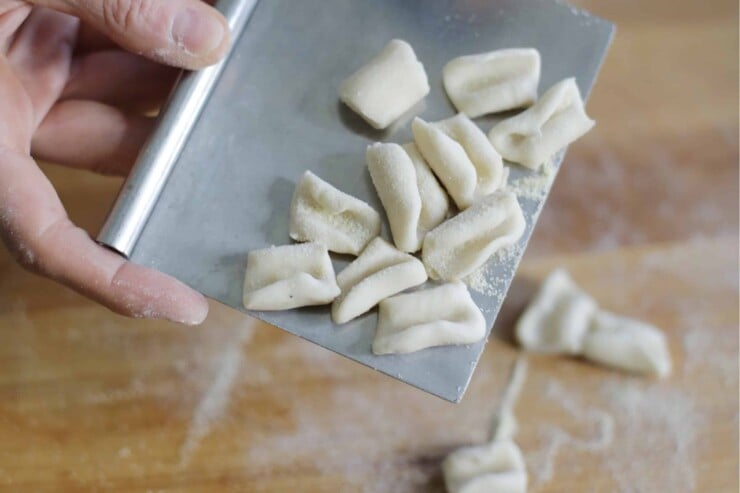
Types of Pasta in Southern Italy
Calamarata (Campania)
Hailing from Naples, calamarata (pronounced “cal-ah-mahr-ah-tah”) pasta resembles calamari rings — hence the name! The noodles are short tubes, and, true to its namesake, you’ll often see calamarata pasta paired with a seafood sauce.
Candele (Campania)
You’ll only find these pasta tubes dried, and because they’re so long, they’re often broken into two or three pieces before cooking. The name candele (pronounced “can-dell-eh”) comes from the noodle’s shape, which resembles a candle like you might see in a church service. The sturdy shape is an excellent combo with a ragú-based sauce.
Cavatelli (Molise and Puglia)
Your eyes aren’t deceiving you — cavatelli (pronounced “cahv-ah-tell-ee”) pasta does look like little hot dog buns! Pasta makers achieve the adorable shape by pushing into small pieces of dough with their thumbs. As a versatile pasta, you can enjoy cavatelli with a tomato-based sauce, a cheesier, creamy sauce, or tossed with fresh vegetables like olives or broccoli.
Fusilli (Campania)
Like southern Italy’s casarecce (pronounced “cahz-ah-rech-eh”) pasta, fusilli (pronounced “foo-zee-lee”) originally got its twisted shape from wrapping spaghetti around a thin wire to dry. The corkscrew shape of this long pasta does an excellent job of catching sauce (try this with a seafood sauce for a burst of flavor), and you might also find it added to soups or made into a pasta salad. In the U.S. and Canada, fusilli are often called rotini.
Malfaldine (Campania)
Malfadine, also known as mafaldine (pronounced “mah-fall-deen-eh”), ae ribbon-shaped pasta with ruffled edges, originating from Naples, Italy. Named in honor of Princess Mafalda of Savoy, they are typically served with rich, hearty sauces like Neapolitan ragù, which clings to their textured surface, or with simpler oil-based dressings for a lighter dish.
Orecchiette (Puglia)
In Italian, orecchiette (pronounced “oar-eh-keyt-ee”) means “little ears. ” If you examine these noodles, you’ll see that their circular, curved shape resembles this body part. This pasta is one of the most classic kinds of Puglia food and you can even see locals making it in the streets of Bari. Pasta makers achieve the shape by taking a small cube of dough, pressing a knife on it, and then dragging the knife on the cutting board, making the dough curl.
We love eating orecchiette in this no-cook heirloom tomato pasta sauce with burrata dish, and you can leave out the burrata for a fully vegan recipe. Like other Southern Italian pasta, orecchiette traditionally uses durum wheat and water, not eggs, making it suitable for those on a plant-based diet. The classic way to serve this pasta is with cime di rapa or broccoli rabe.
Paccheri (Campania)
People once considered paccheri (pronounced “pack-ehr-ee”) pasta for the poorer populations since this large but short tube-shaped pasta can quickly fill an empty stomach. Today, anyone can enjoy paccheri, and the noodles can come grooved, although they’re more commonly smooth. This dish is served with ricotta cheese and spinach or smothered in a rich bolognese sauce. Paccheri also has an interesting bit of food history. Legend has it that the pasta tubes were used to smuggle garlic into Austria when the country banned the importation of Italian garlic in the 1600s. The demand for Italian garlic remained high, and farmers depended on this income, so they got creative by inserting a few cloves into each noodle. Supposedly, the government never found out!
Spaghetti alla Chitarra, Maccheroni alla Chitarra, or Tonnarelli (Abruzzo)
This thin, square-cut noodle is easily among the most popular types of pasta. This spaghetti (pronounced “spa-get-ee”) gets its name not from a musical instrument but from the tool used to make the noodles, which resembles a guitar (chitarra means “guitar” in Italian”). A chitarra pasta cutter has strings running up and down very close together, which cuts the pasta when the dough gets pressed on top of it. These noodles go into one of our favorite dishes, cacio e pepe, a grown-up take on mac and cheese.
Ziti (Campania)
In Naples, ziti (pronounced “zee-tee”) pasta is traditionally served at weddings. It has since made a name for itself in Italian-American cuisine (baked ziti, anyone?), and you’ll typically find it in a tomato-based sauce. The pasta comes in thick, long tubes that, like candle pasta, get broken up before cooking.

Types of Pasta from the Islands
Anelli (Sicily)
These rings of pasta, anelli (pronounced “ah-nell-ee”), measure about 3-4 centimeters, although a more petite version nearly a quarter of that size exists (called anellini). You’ll typically see these in soups and salads, but they also work well as oven-baked pasta or with a pesto.
Busiate (Sicily)
Busiate (pronounced “boo-zee-ah-teh”) is a longer macaroni with a spiral shape from Trapani. The word busa inspired the name — it’s the Sicilian word for a local grass, which some pasta makers use to wrap the dough around and give busiate its corkscrew shape. What better sauce to pair this with than a Trapanese pesto, a specialty in western Sicily made with a base of almonds and tomatoes?
Casarecce (Sicily)
The name for this pasta comes from the Italian word casereccio, meaning “homemade.” Casarecce (pronounced “cah-zah-wrech-eh”) noodles were initially made by taking small rectangles of dough and wrapping them around a thin rod (called a ferro). The resulting shape looks like a scroll with the ends of the pasta curling up onto itself. This twisted shape means lots of places for sauce to catch, and it works well with anything from a pesto to a chunky sauce with eggplant and tomato.
Fregola or Fregula (Sardinia)
Sometimes called “Sardinian couscous,” fregola (pronounced “freh-goh-lah”) resembles tiny balls or pearls. Once the dough has been shaped, it goes in the oven for about fifteen minutes, giving it a nutty taste. Fregola has a lengthy history — some believe it dates back to the 10th century — ait works well in everything from a basil pesto sauce to an herb-packed soup.

How To Identify Quality Dried Pasta
Now that you know 29 of the most essential types of pasta in Italy, here’s what to look for in quality dried pasta.
Do an ingredients check
Buy something made from 100% durum wheat semolina for the best texture. This, along with the protein content (look for at least 13%), means your pasta will better hold its shape during cooking.
Consider the extrusion process
Pasta extruded through Teflon dies comes out slick and smooth, so much so that they don’t hold sauce nearly as well as pasta extruded through bronze dies. Go for the latter — bronze dies give the pasta a slightly rougher, more porous surface to have that delicious sauce.
Go for slow-dried pasta
Once noodles are laid out to dry, a slow, low-temperature method best preserves the natural flavors, nutrients, and texture. While it can take a little longer — several hours to days — it’s a difference you can taste.
Examine the pasta closely
If the pasta looks pale, bleached, or shiny, keep shopping. High-quality dry pasta has a rough, matte surface, and the color is a uniform golden yellow.
Peek at the packaging
Packaging should allow you to see the pasta, so gravitate towards something clear or with a window. This lets you do a quality check to ensure the noodles look intact, uniform in shape and size, and without powdery residue.
Look for the origin
Italians know their stuff when it comes to pasta! Noodles produced in and imported from Italy, specifically from regions renowned for their pasta — like Gragnano or Rummo from Campania, Martelli from Tuscany, or Monograno Felicetti from the Dolomites — often go with traditional manufacturing methods that don’t sacrifice quality.
Know your certifications
IGP (Indicazione Geografica Protetta) or PDO (Protected Designation of Origin) appear on products imported from Europe, and these markings guarantee the pasta is made according to strict guidelines.
Frequently Asked Questions
Italy boasts a wide variety of pasta types, each suited to different sauces and regional dishes. Some of the most common and beloved types include:
- Spaghetti: Long, thin noodles that are best paired with light olive oil or tomato-based sauces.
- Penne: Tube-shaped pasta with ridges, ideal for thicker sauces as the sauce clings to the ridges.
- Fettuccine: Flat, thick noodles that work well with creamy sauces like Alfredo.
- Ravioli: Square or round pockets of pasta filled with cheese, meat, or vegetables.
- Farfalle: Known as "bow-tie pasta," its shape is perfect for holding onto both light and creamy sauces.
Italian pasta varies significantly from region to region, with each area developing shapes and types that best complement local ingredients and culinary traditions:
- Northern Italy: Known for its rich, creamy sauces, northern regions like Lombardy and Emilia-Romagna favor thicker, often stuffed pastas like tortellini and tagliatelle.
- Central Italy: In regions like Tuscany and Umbria, heartier pastas like pappardelle are popular, often served with meat-based sauces.
- Southern Italy: The warm climate is perfect for growing tomatoes, so thinner, dried pastas like spaghetti and linguine dominate, ideal for seafood and tomato-based sauces.
Pairing the right pasta shape with the appropriate sauce can enhance a dish's flavor and texture:
- Long, thin pastas (e.g., spaghetti, linguine): Best with light, oil-based sauces such as aglio e olio or seafood sauces, as they cling to the pasta without overwhelming it.
- Tubular pastas (e.g., penne, rigatoni): Ideal for thicker, meatier sauces or chunky vegetable sauces, as their hollow shapes capture the sauce.
- Flat, wide pastas (e.g., tagliatelle, fettuccine): Suitable for creamy sauces, as their broad surfaces offer ample space for the sauce to adhere.
- Filled pastas (e.g., ravioli, tortellini): Typically paired with simple, light sauces like butter and sage or a light tomato sauce to highlight the filling's flavors without masking them.
Get A Personalized Travel Itinerary
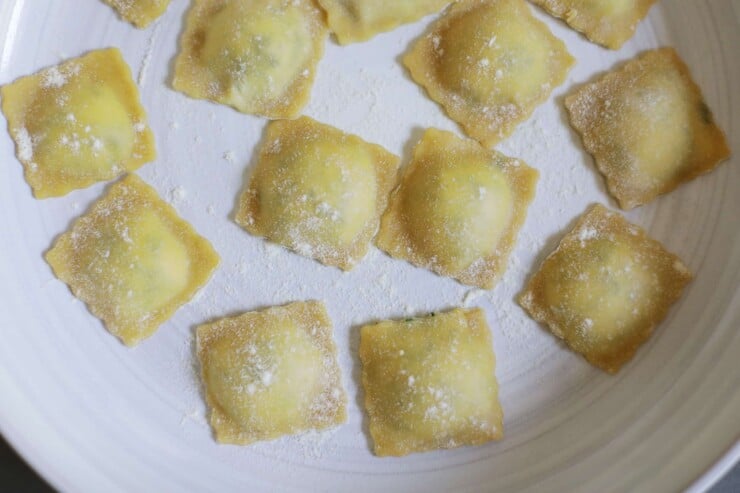
Pasta Recipes To Make at Home
Craving some delicious Italian pasta now? We can’t blame you. If you’re not traveling to Italy, you can make pasta at home even if you don’t have a pasta maker.
Start with a solid basic Italian egg pasta dough recipe — an excellent choice for beginners and suitable for making all different pasta varieties. The ingredients are simple, but check out our tips for making fresh pasta, which will guide you on what kind of flour to use and handy items (like a spray bottle) to make the process more accessible.
If you want to try pasta-making with an eggless recipe, you’ll love this handmade cavatelli pasta. You won’t need fancy tools to achieve the unique, curved shape, and you can quickly freeze the dough so it’s prepared in advance.
Pasta al Pomodoro ranks low on fussiness but high on flavor. The sauce is simple yet divine—olive oil, garlic, basil, and fresh or canned tomatoes—which lets the taste of freshly made pasta sing.
We adore this handkerchief pasta with creamy pesto sauce recipe. The dish contains sheets of pasta half the thickness of lasagna noodles, and it tastes like pure perfection when paired with fresh basil in the pesto.
What are your favorite types of pasta? Were there any on this list that you hadn’t heard of before? Comment below and let us know!
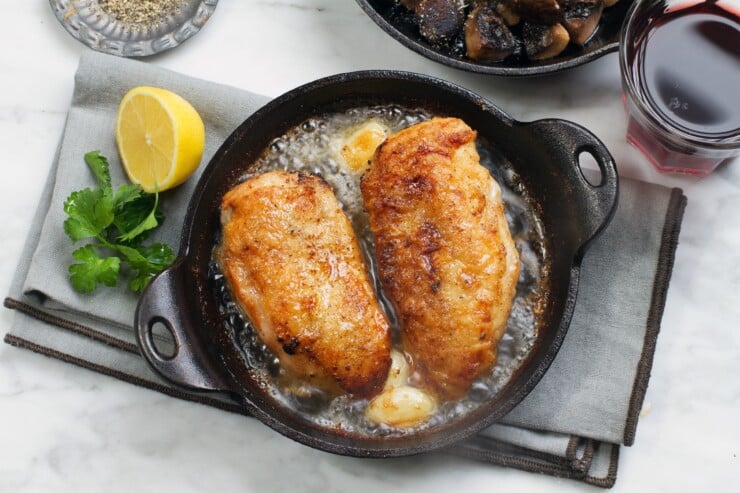
Classic Italian Recipes
Cook up these classic Italian recipes to get a taste of the country in the comfort of your home:

Italy Travel Guide
Looking to travel to the Bel Paese soon? Check out our Italy Travel Guide for more cultural tips, itinerary ideas, and advice on what to eat and where to stay.
Have Us Plan Your Italy Trip
Did you know we’re also a boutique travel agency specializing in Italy travel planning? If you’re looking to plan one of the best trips to Italy, our Italy trip planner services are here to help you plan your perfect itinerary.
Photo Credit: Opening photo by kuvona; trofie pasta by Sara Remington; pasta making by nerudol; casarecce pasta by Brent Hofacker; dry pasta by Vladeep ; other photos by Salt & Wind Travel